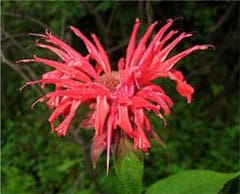
Nowadays, because of the increasing interest in native plants, practically all plant nurseries and garden centers offer at least one or more cultivars of Monarda to brighten your garden in summer. In one garden I tend, the local deer walk through the garden every evening biting off pieces of all kinds of flowers but have never ever touched the Monarda or have shown the slightest interest in it. Monarda is quite resistant to deer browsing. As a result, people are looking for deer-resistant plants to add to their gardens. Because of that, Monarda is sometimes called “wild bergamot.”Īs the deer herd in some urban and suburban communities increases, gardens are being severely damaged by deer feeding on plants. Adaptable and easy to grow, it is resistant to deer and rabbits and is hardy in zones 4-9.
Bee balm plant zone full#
While the flowers have no scent, the leaves, on the other hand, have a distinct aroma similar to an orange citrus species called bergamot the ingredient that gives Earl Grey tea its flavor. Plant in full sun to part shade and average to moist soil.

With its sought after blue-purple tone of color, this bee balm would be a prized possession in your garden when it blooms during the summer. Monarda didyma also attracts hummingbirds, which are an important pollinator for the flowers, even more so than insects. Partial Sun to Full Sun (At Least 5 Hours of Direct Sunlight) Mature Height 18 - 22 Inches. Others with shorter tongues and slender bodies, such as honeybees, are able to crawl into the flowers to the nectaries. The flower parts are quite long, which means any insect visiting the plant for nectar needs an extra-long proboscis to reach the nectar stored deep inside the flower.

Blooming for weeks from mid to late summer, they rest upon a whorl of decorative bracts. Its flowers produce plenty of nectar that attracts and feeds many beneficial insects, such as bumblebees, butterflies and other nectar-gathering insects. Monarda 'Purple Rooster' (Bee Balm) is a clump-forming perennial boasting masses of large, royal purple flowers, borne in dense, globular terminal heads. Monarda’s common name, “bee balm,” refers to its use at one time to sooth bee stings rather than calm the bees themselves.


 0 kommentar(er)
0 kommentar(er)
